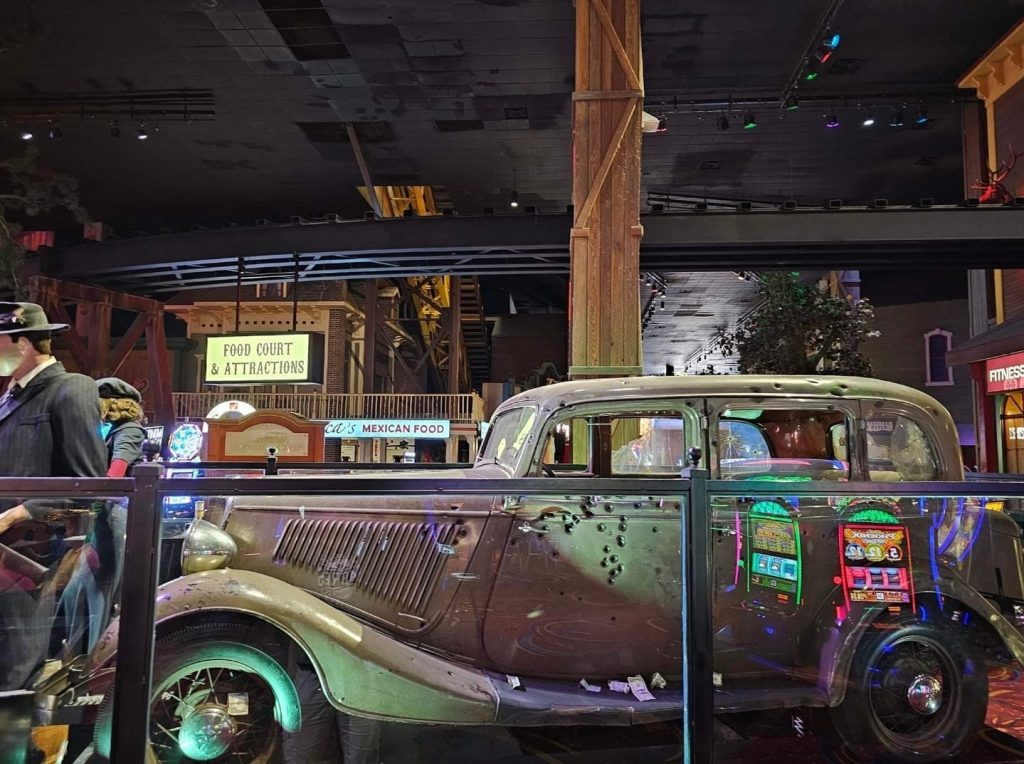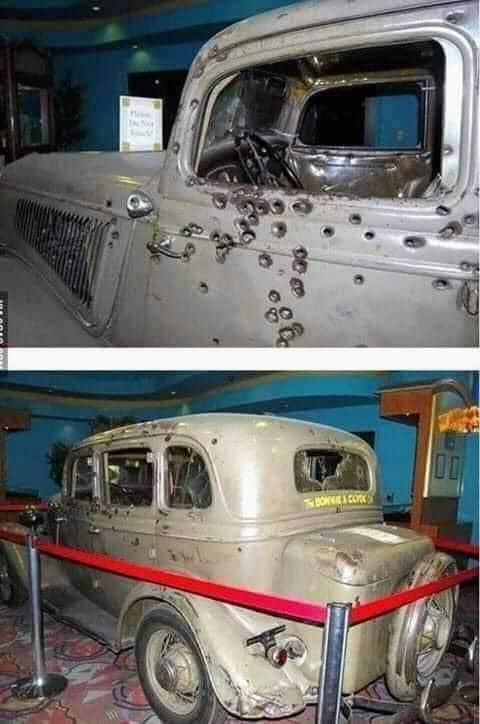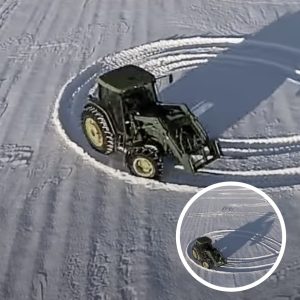
In the annals of American crime history, few names are as infamous as Bonnie Parker and Clyde Barrow. The young, daring outlaws captured the public’s imagination during the Great Depression, embarking on a two-year spree of robberies, murders, and daring escapes that spanned several states. But as thrilling as their life on the run was, it ended as dramatically as it began. On May 23, 1934, in a small town in Bienville Parish, Louisiana, Bonnie and Clyde’s journey came to a violent halt in a hail of bullets that riddled their car—a 1934 Ford V8 sedan.
Today, the car stands as a haunting artifact of their story. Its bullet-riddled frame is a stark reminder of that final ambush, frozen in time to offer a glimpse into one of America’s most famous crime sagas.

The Notorious Outlaws: Bonnie and Clyde
Bonnie and Clyde met in Texas in 1930, quickly becoming partners in both love and crime. Clyde, already a petty criminal, escalated his activities with Bonnie by his side, forming a small gang that included family and friends. The “Barrow Gang” as they came to be known, embarked on a series of robberies targeting banks, stores, and rural gas stations.
Unlike other criminals of their time, Bonnie and Clyde developed a public image that fascinated Americans. While violent and dangerous, the couple’s youth, stylish appearance, and rebellious lifestyle made them icons in the midst of the Great Depression. Photos of Bonnie, cigarette in hand and pistol in the other, alongside Clyde with his signature grin, were widely circulated in newspapers, adding to their mystique.
The Final Ambush
By early 1934, law enforcement agencies across the country were in hot pursuit. The Federal Bureau of Investigation (FBI) and local police from several states had tracked the Barrow Gang’s movements and were closing in. Texas Ranger Frank Hamer was ultimately brought on board to lead the manhunt, and he pursued Bonnie and Clyde relentlessly. Hamer, along with a posse of lawmen, eventually set a trap in Louisiana, where they had discovered the pair’s travel route.
On the morning of May 23, 1934, the ambush was set on a rural road near Gibsland, Louisiana. As Bonnie and Clyde approached in their Ford V8, the lawmen opened fire, releasing a barrage of bullets into the car. The violence was overwhelming; more than 130 bullets tore through the vehicle, killing both Bonnie and Clyde almost instantly.
The impact of the ambush was such that the car, which took the full brunt of the firepower, was left riddled with bullet holes, its windows shattered, and its metal frame dented and punctured. The car was towed away, with the bodies of the famous outlaws still inside, attracting huge crowds and intense media coverage.
The Legacy of the Bullet-Riddled Car
Today, the car remains a powerful symbol of Bonnie and Clyde’s story. Preserved in its original, damaged state, the Ford V8 has been displayed in various museums and exhibits, drawing visitors fascinated by the couple’s short, violent lives. Every bullet hole tells a part of the story, serving as a reminder of the force used to bring down two of America’s most wanted criminals.
The car, now a relic of a bygone era, also raises questions about the appeal of Bonnie and Clyde. Despite their violent actions, they became folk heroes of sorts, embodying the spirit of defiance against authority during hard times. Their lives—and their deaths—underscore the complexity of how society remembers such figures: not as simple criminals but as tragic anti-heroes who went down fighting.
The Infamous 1934 Ford V8: A Museum Piece
Today, the bullet-riddled car can often be found on display at museums and exhibitions. Many visitors find themselves drawn to the car, imagining the final moments of Bonnie and Clyde’s lives as they sped down a dusty road toward an ambush that would end their story. It’s a piece of history that is as unsettling as it is fascinating, a tangible connection to a moment frozen in time.
In many ways, the car encapsulates the mythology surrounding Bonnie and Clyde. While the ambush was an act of law enforcement, it was also a deeply violent end to two lives that had captivated the nation. The Ford V8, scarred and battered, serves as a final monument to their legacy—a reminder of the danger they represented and the dark allure that still surrounds their story.
Conclusion
More than 90 years later, the legacy of Bonnie and Clyde continues to live on, not just in books and movies but in this rusted, bullet-riddled car that traveled with them to their violent end. The car stands as a testament to a turbulent time in American history, a period marked by both intense hardship and the emergence of unlikely, often tragic, figures who left an indelible mark on the American imagination.
As long as this car remains on display, it will continue to tell the story of two outlaws who defied the odds—and met their fate in a way that was as legendary as their lives.





